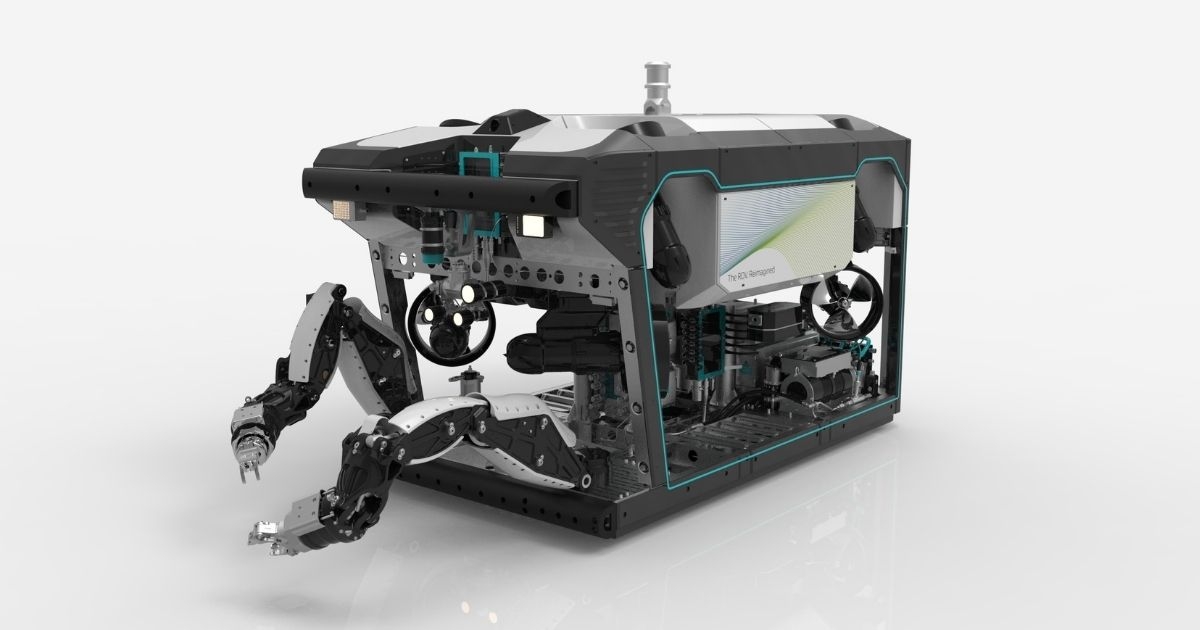ROVs for Uncrewed Vessels

The development of simple canoes and rafts enabled mankind to take to the water and catch food. As knowledge grew humans started going further afield on a quest to explore and conquer distant lands. This also gave rise to trade, the shipment of goods across the world’s oceans, and the advent of larger faster vessels.
In recent times, mankind has gone to sea to exploit its resources and build infrastructure for energy and communication industries. These vessels need not only transport goods to site but also have methods of deploying and installing equipment to the seafloor. Vessel purpose has evolved over time.
Clearly travel, the very act of moving humans, requires humans at sea. But for all the other activities, having people onboard can be questioned if it is not the primary reason these vessels go to sea. Sending a person to sea is expensive. Vessels need to provide offices, accommodation, food, sanitation, and a safe environment for humans. In addition, companies need to provide training, insurance, medical and transfers. It all costs money.
A figure I heard a few years ago was that it costs $1.3 Million (USD) to send a person to sea, for a year, on an offshore construction vessel.
But change is afoot. Remote working is moving from being acceptable to being desired. Driven by a need to reduce cost, environmental and safety concerns, and a change in mindset to work-life balance. Communication and AI Technology is enabling this and moving at a staggering rate. As is the equipment that can use these technologies to conduct remote operations at sea and work for long periods without human intervention. Recently we have seen a rise in experimental uncrewed vessels. These are targeting the transportation of goods, data and survey operations and now subsea ROV operations. With it comes new opportunities for personnel to work from remote communication centers onshore, closer to family and friends.
ROVs REIMAGINED
SMD, based in Newcastle, in the U.K., is well known for its heavy-duty subsea machinery. Celebrating its 50th birthday this year, the company has delivered many world firsts in subsea robotics. Over the past four years, SMD has invested R&D into its next-generation remotely operated vehicle technology. It has placed a heavy focus on enabling technology for over horizon control and uncrewed vessel applications. This is to support:
- Cost reduction/li>
- Improved safety/li>
- Reduced CO2
- Better performance
The first project is SMD’s ROV Evolution Program. The output of which is a new range of high-performance Electric ROVs with optimized variations for Offshore Wind, IMR, survey and heavy construction.
Up until now, ROVs have relied on operators onboard to ensure availability. SMD has put a lot of emphasis on efficiency and reliability to reduce this need.
DC POWER EFFICIENCY
A key part to the successful application of an uncrewed vessel is a reduction in size, weight and power to lower costs and CO2 levels. SMD wanted to ensure that its ROV technology played its part in this too. The hard part is doing it without sacrificing performance and capability. SMD has achieved this by using an advanced DC power distribution and a powerful DC propulsion system on its new ROVs. It is 38% more efficient than an AC power system used by traditional hydraulic WROVs. Not only can this equate to a $200,000/year fuel saving, but DC power also enables the use of smaller lighter umbilicals, and smaller, lighter launch and recovery equipment.
The new technology is well suited to low power and/or battery-operated vessels. SMD’s new ROV range is battery compatible out of the box. A fully charged battery can be installed into the ROV before setting sail, the vessel can provide trickle charging so low power work can be conducted. When a demanding task is required the ROV battery can ‘peak shave,’ keeping demand from the vessel supply to a minimum.
FAILSAFE REMOTE OPERATIONS
The uncrewed vessel business case does not work if the equipment onboard is unreliable. This area has received particular attention from SMD. The number of moving parts in the new ROVs has been reduced. Moving parts tend to account for most wear and breakdown. Where a moving part is unavoidable—such as a thruster propeller—SMD has taken steps to reduce the possibility of a failure stopping operations. The thrusters use a magnet coupling and hermetic sealing to enable continued operation even if a seal fails and the unit is flooded.
Redundancy plays a large part too. Each thruster is a standalone unit that can be isolated in the event of catastrophic failure. If this happens an advanced flight system compensates, retaining a level of control. The communication system is split between two interface units. If one fails, the other can take over. And the DC conversion process uses parallel units to share the workload. Should a fault occur these units can be isolated independently, for continued operation.
The final important area that has been considered is the communication interface between the ROV and the uncrewed vessel. An uncrewed vessel must be able to take command of the ROV in an emergency, recover to deck or move it to a safe location. Although protocols and standards have yet to be determined, SMD’s control hierarchy permits a flexible level of over horizon third party access.
SMD is coming to the end of the development phase for the first two vehicles. This also includes an all new electric TMS and intelligent LARS range to compliment the ROVs. Open water trials are planned to start soon. A new dawn of remote subsea operations is nearly here.
To find out more about SMD’s line of next-generation ROVs, visit: https://www.smd.co.uk/our-products/electric-rovs/
This article was originally featured in ON&T March 2021. Click here to read more.

